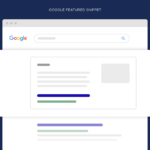The SEO industry is fascinating. A growing number of websites from various industries are being produced every day due to the world’s rapidly evolving digital marketing. Of course, any website owner’s priority is to dominate the SERP rankings to attract visitors.
When you believe you have mastered Google’s search criteria, an algorithm update upends your plan. Each year, Google updates its search engine ranking algorithm hundreds of times.
An SEO technique that was effective last year might not be practical this year, and one that is effective today could not be effective in the future.
What should one do as a result?
Even though algorithm tweaks and enhancements will continue, some tried-and-true SEO Techniques can always be used.
By putting these SEO techniques into practice on your website, you increase your chances of ranking while also protecting it from Google’s inescapable updates.
This manual will coach you through every step of the uncommon SEO techniques which double your website traffic.
So read this tutorial if you want to boost your site’s performance to increase visibility while also increasing organic visitors.
1. A Thorough Website Review
Site auditing is not uncommon, but we ranked it first because it is a growth hacking tactic that has been successfully used to draw in and keep clients.
Some SEO firms combine their economic SEO services for small businesses or giant corporations with manual website audit services.
When you run an SEO audit for your complete website, it will carefully assess the performance of your entire site and make recommendations for possibilities to enhance or correct issues.
Therefore, it would be advisable to engage a company to do this job flawlessly if you don’t have the time.
You can also finish this job on your own with the aid of many tools. Consider this:
- Google Search Console,
- Google Analytics,
- HubSpot Website Grader,
- Ahrefs,
- SEMrush,
- Screaming Frog SEO Spider,
- Seomater, and
- GTmetrix are some SEO tools available.
You can decide which is your favourite. The URL of your site must then be entered, and you must then press the tool’s equivalent of the “start analysis” button.
You will receive a report detailing your site’s performance score, problems, and fixes after the audit is finished.
2. Keep an Eye Out for Your Competitor’s Top-Performing Pages
It is known that you can perform better the more you are aware of your rivals’ tactics. Finding the best pages of your competitors can be a helpful place to start in this case. Look for:
- Where their organic website traffic originates from;
- A content or keyword gap;
- Linking gap;
- keyword cannibalization; and
- Possibilities to enhance your current content
You can utilize tools for competitive analysis at this time, such as:
- UberSuggest,
- SEMrush,
- SimilarWeb,
- SpyFU, and
- Google Advanced Search Operator are examples.
You can use these to study each domain of your rival and gain in-depth knowledge of their top-performing pages.
Additionally, while conducting a competition analysis, be sure to take the following actions:
A. Take Advantage of Your Competitor’s Broken Links
Creating high-quality backlinks is one of the challenging SEO operations. It is an excellent strategy to take advantage of your competitors’ broken backlinks to build quality backlinks. Finding links that lead to 404 pages on your rival’s website would be helpful in this case.
The next step is to identify your rivals’ broken links, which must be pertinent to your website. Create material that best suits the link afterwards, and then let the site owners know. They might be willing to replace the broken link with something more worthwhile.
B. The Most Effective Keywords Used by Your Competitors
Finding the appropriate keywords for your website to base content on can typically be done in two simple ways. As follows:
- Search for the terms your rivals are already ranked using.
- Using keyword research tools.
Finding competitive websites already performing well in Google will help you determine your competitors’ best ranking keywords.
You will be able to comprehend their actions and methods in this way. The next step is to identify content pertinent to or covers similar ground to yours.
Next, enter the URL of your competitor’s home page into a keyword research tool to acquire a list of relevant keywords.
Of course, not every keyword will be appropriate for your website; as a result, you should only focus on keywords pertinent to your industry.
3. Design a New Content Strategy and Improve It
We generally concentrate on optimizing the current content and producing fresh pieces for our site when we think about developing a new content strategy.
However, optimizing current content is frequently a helpful beginning point, but eventually, you’ll need to concentrate on producing new content.
Here are some uncommon strategies for content development that you can use to your advantage.
A. Analyze the Keyword Gaps
A keyword gap analysis is the most straightforward and fastest way to launch your content strategy. As previously mentioned, you need to learn which keywords your rivals are ranking for but which you have not yet chosen to target.
B. You Must Use at Least 1,447 Words in Your Content
Research by Backlinko looked at 11.8 million Google search results. The first Google result’s average content word count, according to this study, was 1,147.
Posts with more than 1,500 words generated twice as many social shares as those with fewer than 1,500 words, according to Neil Patel’s study.
Therefore, it would be beneficial if you concentrated on writing material that was 1500 or more words.
This tactic will let you cover a single topic in such detail, even though a shorter blog post with superior writing will score higher than the minimal wordy-rich material.
Readers and Google will both value it more in this way. Longer content can also organically include more pertinent keywords and rank for those.
C. Promote “People Also Ask”
“People Also Ask” is a feature that appears on search engine result pages, and smart SEO should make use of it to its full potential.
According to a survey by SEMrush, the average share of SERPs for desktop and mobile that include “People Also Ask” has risen to roughly 40–42%.
In addition to increasing your chances of ranking twice on the first page of the SERP, optimizing your content for PAA will make it easier for clients to find you at the top of search results when they have specific queries.
D. Content Optimization For Semantic SEO
Semantic SEO suggests that search engines will comprehend the subjects of your material. But how can you use semantic SEO to improve your content?
As you have done before, you must optimize your page for your target keywords in order to accomplish this. After that, you should discuss related or pertinent subtopics to your main issue.
At this point, you can utilize the LSIGraph tool to identify subtopics that are connected to your target keywords. This strategy aids Google in comprehending the overall subject of your page, not just the targeted keyword.
4. Utilize Digital PR to Acquire Credible Backlinks
Did you know that one of Google’s top three ranking variables is the number of backlinks?
While there are several link-building techniques to obtain high-quality backlinks, some of them are challenging to scale.
Among these strategies, digital PR can assist you in obtaining backlinks from publications.
Here, you should produce high-quality material and pitch it to publications and journalists who cover your sector or specialized area.
If they think your work is of high quality, they might wish to cover it and link to it in their own pieces.
Remember that digital PR is not linkable asset promotion or press release product pitching. Act like a PR professional and tell the correct story in this situation.
5. Use an Infographic to Increase Website Traffic
The majority of web users (65%) learn best visually, and they prefer images to text when it comes to deciphering complex material.
Infographics can be a terrific approach to swiftly and clearly present complicated information to this 65% of learners.
Quality infographics, in Neil Patel’s opinion, can help your website gain about 193% more visitors. And you must concentrate on the following when producing high-quality infographics:
- Collecting all relevant statistics
- Making the infographic with programs like Canva, visual.ly, or Venngage.
- Utilize the information in your infographic to inform your blog article.
- Please consider submitting it to the directories.
6. Find Untapped Keywords on Wikipedia and Reddit
In particular, for long-tail keywords, Reddit and Wikipedia are a gold mine for keyword research.
Simply type a keyword or seed term to search Reddit and Wikipedia using that information. then keep an eye out for the displayed keywords.
A single Reddit and Wikipedia entry will provide you with numerous keyword and topic suggestions.
If you require further keyword suggestions, click on an internal link to another Wikipedia entry and proceed in the same manner.
7. Send Link Juice to Your Lower Rank Pages, and Be Sure To Do So
You can have pages that rank on Google’s second or third page for a long time.
Here, by simply passing high-quality link juice, you can assist those pages with lower rankings in rising to the top of the page.
So, how can you pursue this? It’s easy to understand:
- Just add some fresh links and current information to your posts to update them;
- Re-post the content to social media;
- linked to the material from the pertinent more recent posts;
- Link to external domain-authority-high websites.
8. Aim for Excellent UX (User Experience)
You must take into account your users’ entire user experience in addition to keywords and content.
When ranking your website, Google considers a variety of variables, one of which is the amount of time visitors spend on the site (or dwell time).
Google will be alerted that the material on your page is not what their users are searching for if they see users leaving your page shortly after arriving.
The amount of time it takes a page to load is one factor that will influence dwell time and bounce rates.
A web page typically takes 10.3 seconds on a desktop and 27.3 seconds on a mobile device to fully load, according to an analysis of over 5 million desktop and mobile sites.







Thanks a lot for sharing the blog. the information you shared is just awesome and very helpful.